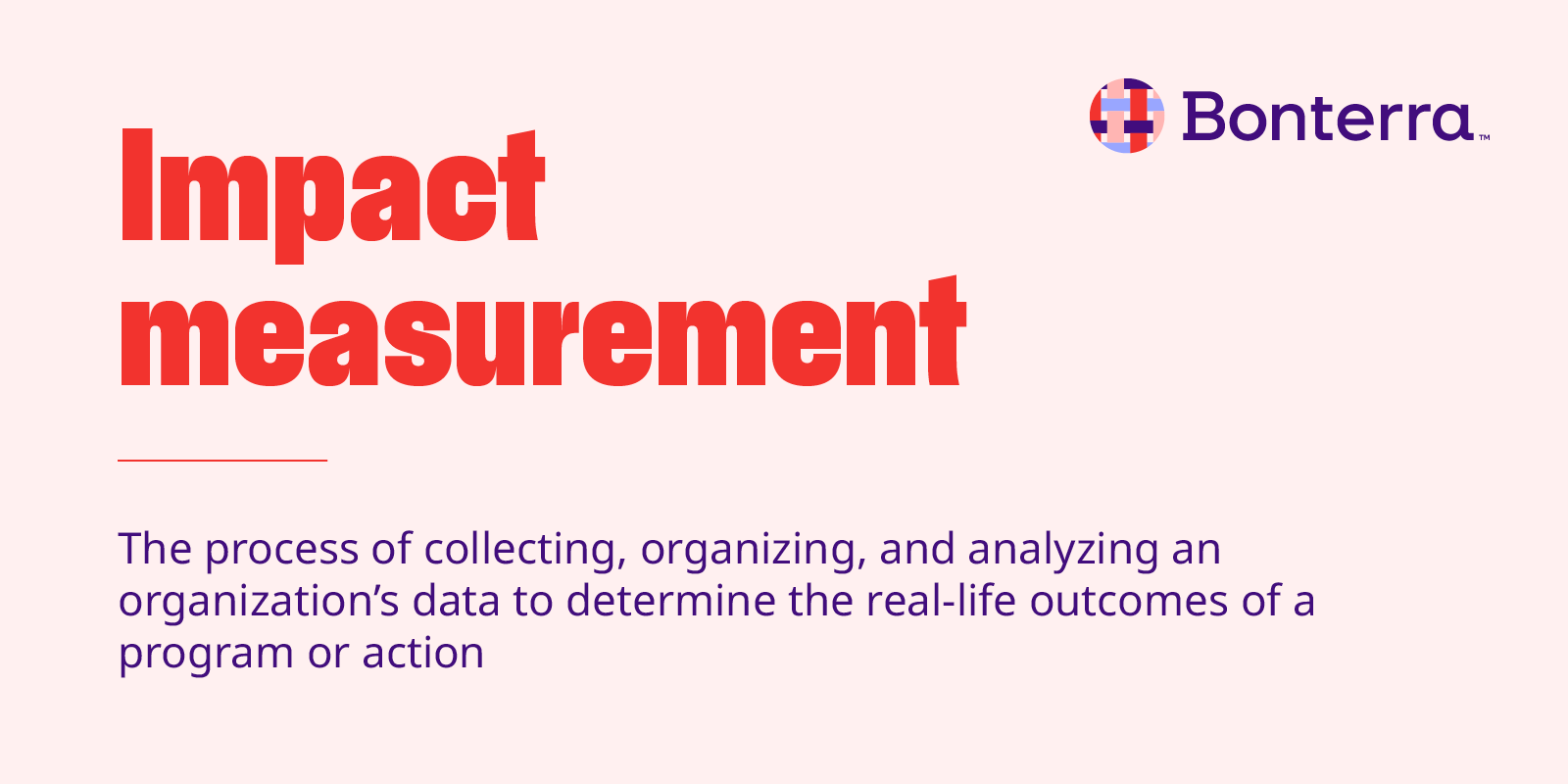Every nonprofit organization and public sector agency wants to positively affect the people it serves, whether by improving their access to essential services or giving them the tools to improve their lives. However, accurately gauging that impact can be challenging. How do you know when your services have really made a difference?
The answer is through strategic, thorough impact measurement. Case managers and program leaders must work together to implement systems and processes for collecting impact data that they can act on. In this guide, we’ll explore the basics of impact measurement and how to use it to holistically improve your programs.
What is impact measurement
Impact measurement is the process of collecting, organizing, and analyzing an organization’s data to determine the real-life outcomes of a program or action. Effective impact measurement doesn’t just consider basic metrics — it uses both quantitative and qualitative data to measure how your organization affects clients, program participants, and other community members in tangible ways.
While any organization can participate in impact measurement (including for-profit companies and investors), this guide will focus on the process for nonprofits and public agencies.
Benefits of effective impact measurement
Why take an updated approach to measuring impact rather than sticking to your traditional processes? Thorough impact measurement comes with some major benefits, helping your organization:
Understand and improve your programs.
Measuring impact data helps you identify which aspects of your programs are most effective and which need improvement, providing actionable insights into how you can pivot to achieve better outcomes. If you work with other organizations or businesses, you’ll also get a better understanding of your collective impact on the societal issues your programs address.
Make data-driven decisions.
With quality information about program outcomes, your organization will be able to make more informed, strategic decisions on both a daily and long-term basis. Making data-driven decisions helps your organization reach data maturity, meaning you can confidently act on your metrics to better allocate resources, improve programs, and drive positive outcomes for individuals.
Get more funding.
Measuring impact gives you new data you can share with funders to prove that your programs are making a difference or illustrate why you need additional funding. With the right software solutions, you can easily compile your data into compelling impact reports and share them with potential funders.
Engage stakeholders.
Impact measurement doesn’t only involve hard numbers. It also incorporates qualitative data and direct feedback from clients and participants. Gathering this feedback and working together with your stakeholders to improve program outcomes will show them that your organization cares, potentially increasing their engagement long term.
Maintain accountability.
When your team understands the real impact you make and can communicate it accurately with other stakeholders, this naturally leads to more accountability within your organization. Impact measurement and reporting increases your transparency and cultivates trust in your supporters.
How to measure impact as a social good organization
Now that you know why impact measurement is important, let’s walk through each step in the general process.
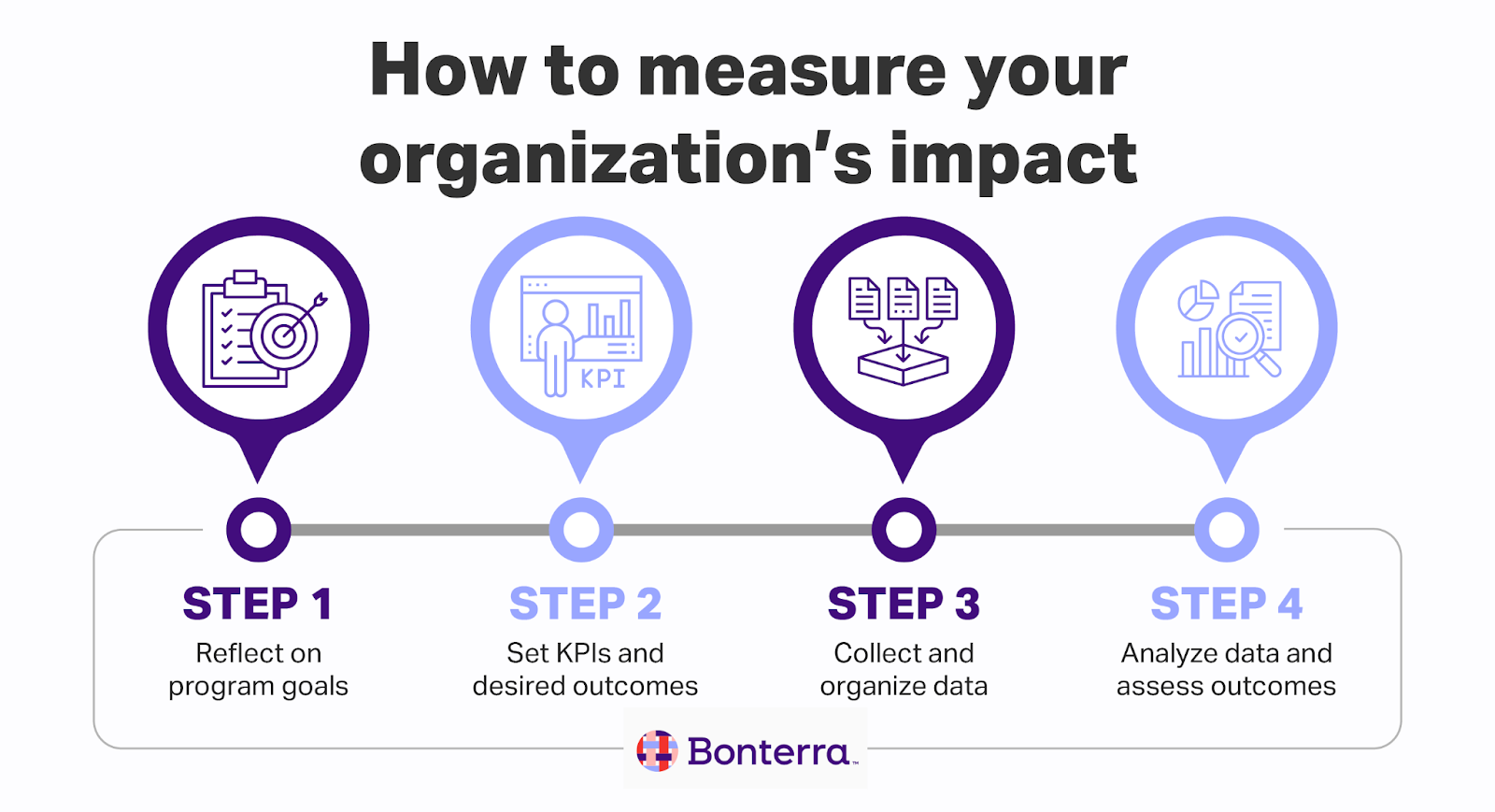
1. Reflect on your program’s goals.
First, look back at your original goals for the program and define your desired impact. Ask yourself or your team questions like:
- What do you hope will change in the community or individuals’ lives due to this program?
- How exactly do you want to help clients and participants?
- What does success look like for the individuals you serve?
- Is there anything this program has struggled to accomplish in the past?
- How does this program support your organization’s mission?
- What is your long-term vision for this program?
These answers will help you create a theory of change, which is a framework for your ideal outcomes and what it will take to achieve them.
Additionally, consider any factors that may impact your ability to progress toward these goals, such as a limited number of case workers or a law that adds access barriers your clients must navigate.
2. Choose KPIs and clarify desired outcomes.
Using your refined goals, outline several key performance indicators (KPIs) that you can use to measure and guide your progress toward them. Include both desired outputs and outcome measurements to get a holistic picture of what successful impact measurement looks like. Refer back to our comparison graphic if you’re unsure which category a metric falls into:
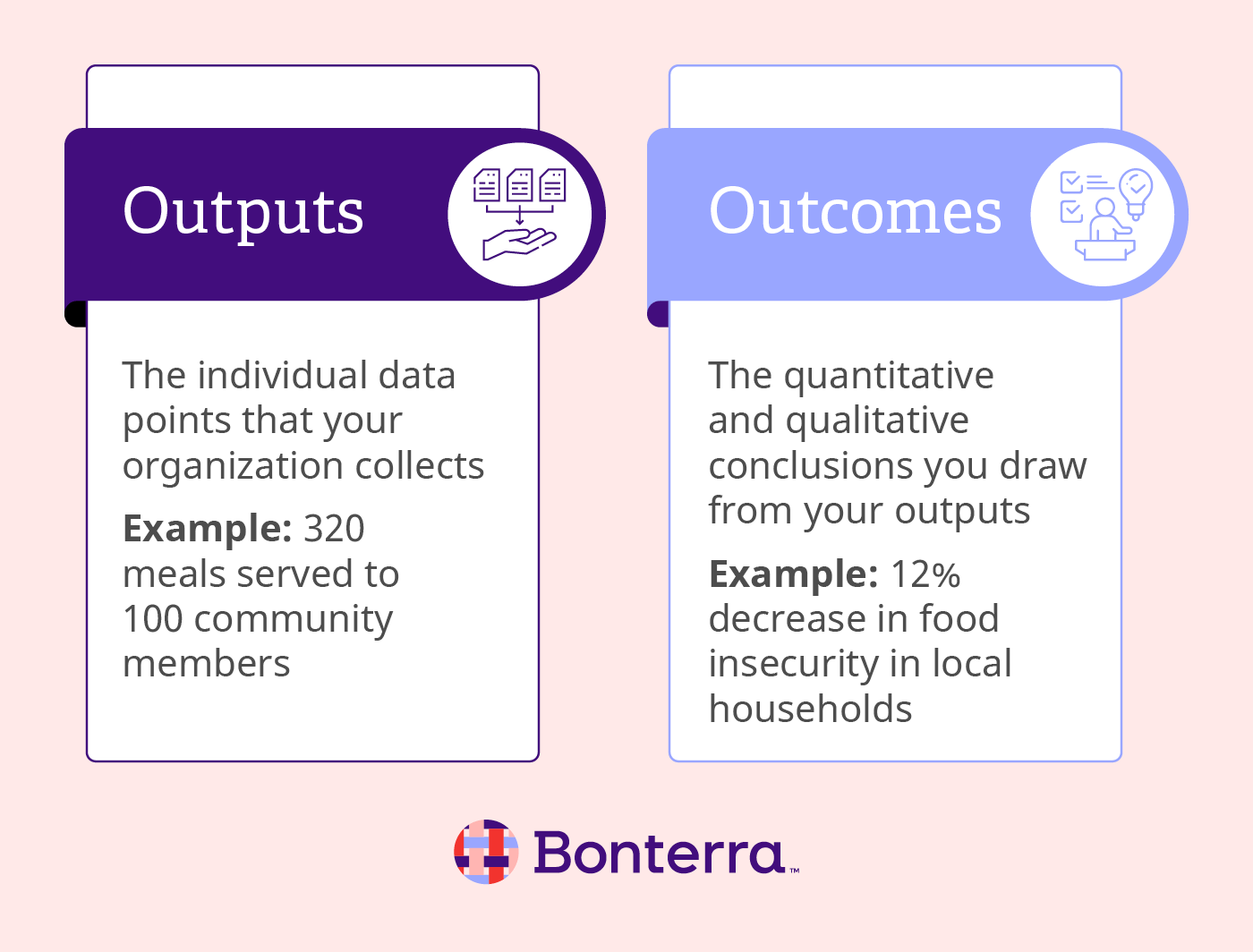
- Outputs are quantitative data points that you collect during service delivery. For example, a family services organization might aim to connect at least 50 low-income expecting mothers with trauma-informed doctors.
- Outcomes are quantitative or qualitative conclusions about the real-life impact of your outputs. Using the same example, target outcomes for the family services nonprofit might be to see a 10% decrease in birth complications and a 12% decrease in cases of postpartum depression among clients.
Both types of metrics are crucial to include in your impact measurement plans. Ensure that each of your KPIs is actionable, measurable, and clearly connected to your program’s goals. Define how and when you’ll track outputs along with what steps you’ll take to measure your outcomes.
3. Use software to collect and organize data.
Next, start collecting the data you need to measure your outputs and outcomes. The best way to do so is to use dedicated case management software to easily compile and organize data through a combination of:
- Intake forms
- Surveys
- Assessments
- Case worker observations
- Administrative records
Quality software will automatically compile this data and create custom reports so you can see everything from one place.
Don’t forget to determine how you’ll manage your data to keep it secure and clean once you collect it. This may include conducting regular database audits, using a secure, HIPAA-compliant system, and limiting data access to only those who need it to do their jobs.
4. Analyze impact measurement data and assess outcomes.
Finally, compile your program outputs and translate those outputs into outcomes. Assessing both your final outputs and outcomes will allow you to understand your program’s true impact on the community.
Your software should help you analyze your data by creating custom reports and dashboards that compare your most important program data points. For example, a report might show you the total number of clients served split by demographics and compare that to the number of clients who delivered babies without complications, those who reported symptoms of postpartum depression, and their satisfaction level with the care they received.
From here, compare your outcomes with the KPIs you established earlier. Analyze your program’s impact on individual clients, and take action based on the insights you glean from impact measurement. This might mean focusing more on certain demographics, reporting your successes and challenges to funders, etc.
Measuring impact with case management software
Using case management software instead of spreadsheets or disparate systems for impact measurement can help you spend up to 35% less time on data entry and 40% less time on reporting and analysis. This is because using robust software leads to more centralized data, cuts down on administrative work, and makes impact measurement easier and more accurate.
To see the best results with new case management software, choose an impact-focused solution with features to simplify and improve your data management processes.
For instance, Bonterra Impact Management, built on Apricot, was created by case workers for case workers and designed specifically to meet your needs. Our comprehensive case management software includes key features for measuring impact and demonstrating it to funders, including:
- Streamlined data collection: Use a custom form designer to create logic-based forms for intake, assessments, and more that collect the exact data points you need to measure impact. Store this data alongside client documents and records to access everything from one place.
- Template library: Not sure how to design forms to collect important data? Browse a full library of templates for common assessments and interventions that were built on case management best practices.
- Participant engagement tools: Collect direct feedback from clients and participants through secure web forms, streamlined intake processes, and participant portals. View this qualitative data in clients’ profiles to glean insights quickly.
- Simplified reporting and data visualization: Native reporting tools allow you to easily generate visual reports of collected data and analyze them to identify program outcomes. Or, use advanced reports to get an in-depth analysis of your program’s impact automatically.
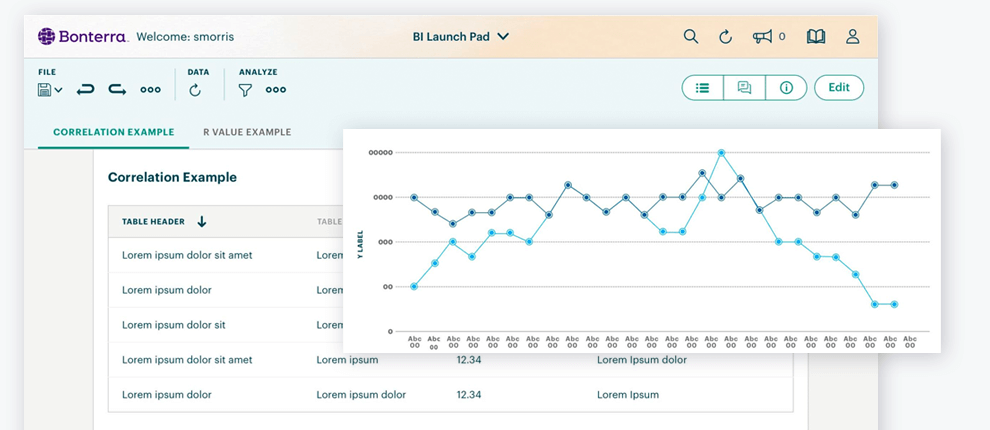
As explained in our case management to impact management guide, Bonterra Impact Management “makes measuring impact part of service delivery, not an add-on or nice-to-have feature. Impact measurement and reporting are included in our standard program configuration of best practice templates, so you can quickly and easily get the information you need.”
Examples of successful impact measurement
Impact measurement looks different depending on the type of organization, its level of data maturity, and the program’s unique goals. However, we’ve worked with thousands of nonprofits and public sector agencies and seen all kinds of organizations successfully measuring impact. Let’s explore just a few success stories to see impact measurement in action.
A Place Called Home
A Place Called Home (APCH) is an agency that provides free programs and services for young people in Los Angeles, addressing needs like mental health, nutrition, and socioemotional development. Before switching to Bonterra Impact Management, APCH was manually tracking service data in spreadsheets, which took up too much time and limited their service delivery.
Once they made the switch, APCH used our software to create a brand-new outcomes tracking system with an organizational logic model and unique theory of change. This helped them move away from spreadsheets and implement a streamlined process for tracking and reporting on crucial impact data.
ACPH tracks outputs like attendance and the number of staff interactions, then translates that data into outcomes such as increased graduation rates and higher member retention. Ultimately, they aim to increase the average level of education for community members in their zip code.
Sonoma County Human Services
Sonoma County Human Services uses Bonterra Impact Management to manage its Upstream Investments initiative, a program dedicated to improving community members’ well-being, improving racial equity, and reducing poverty in Sonoma County.
As part of this initiative, Sonoma County needed to create an outcomes tracking and impact measurement system they could share with partner organizations and schools throughout the county. With Bonterra’s help, they developed a new shared impact measurement framework that helps their partner organizations continuously improve their programs. These organizations use the shared data for preventative case management to address inequities before they affect families.
Now, Sonoma County Human Services can collect and analyze outcomes from across all the organizations they support, proving their impact on the local community.
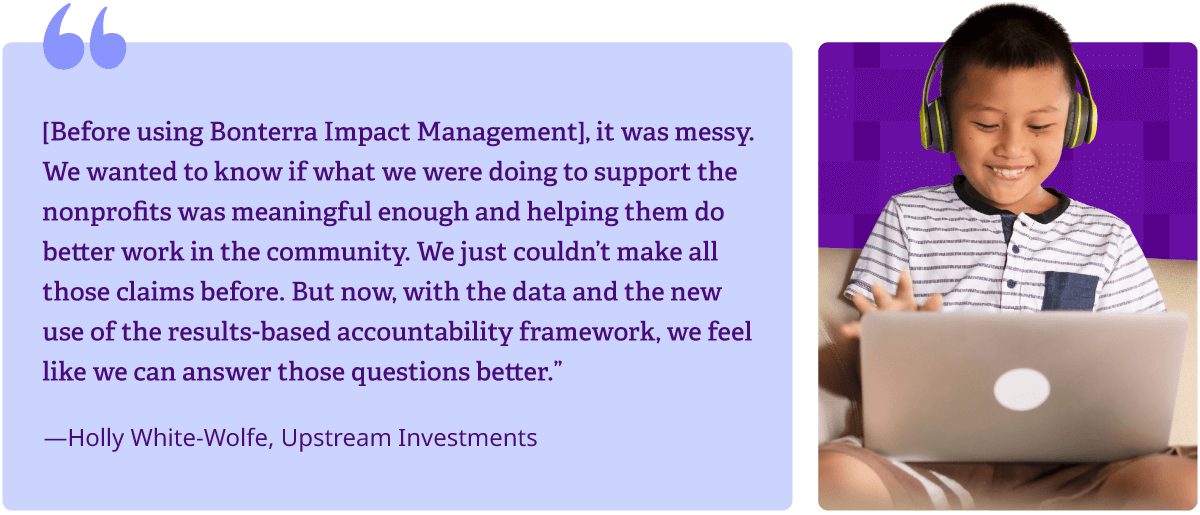
Start measuring impact with Bonterra
Impact measurement may not be a quick process, but it’s an essential one that your organization can manage more easily with the help of best-in-class software. As you decide how you’ll improve your organization or agency’s approach to measuring impact, consider Bonterra Impact Management — the best case management software for improving outcomes, streamlining impact measurement, and reducing administrative burdens.

